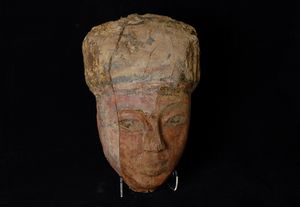
The ancient Egyptian city of Amarna. was the short-lived capital built by the Pharaoh Akhenaten and abandoned shortly after his death (c. 1332 BCE). It is of particular significance as it represents both the location of the first major society dedicated to the cult of a single god as well as an important city that was occupied for a relatively brief period and then abandoned. It is thus simultaneously the key to a chapter in the history of religious experience and to a fuller understanding of what it was like to be an ancient Egyptian. More information on Amarna can be found in Kemp 1977; 1995; 2002 and 2005.
The objects in the archive have been recovered over the various seasons of fieldwork. The digitisation of the materials was performed as part of the Virtual Amarna Project funded by the Amarna Trust.
More information on Amarna can be found at http://www.amarnaproject.com/.
The datasets in this section of the archive resulted from the 3D digitization of the objects using a Konica Minolta Vivid 9i system, Technical details on the process are provided in the associated Internet Archaeology article (Limp et al 2011, see below). Comprehensive metadata on the objects follow that specified in the new Laser Scanning Guide to Good Practice. Data formats provided in the archive are:
- Images - these are standard digital photographs provided as jpg files.
- 3D PDF files - 3D PDF is an Adobe Acrobat file format and files in this format can be read by the free Adobe Acrobat Reader software (versions 8.1 and later).
- Meshes (obj) - Meshes are the result of the conversion of a point cloud into a triangulated mesh - with the texture (that is color imager) applied to the resulting triangulated facets. The mesh format is immediately usable by many software products including most animation and visualization software. Additionally the obj format can be viewed using a number of free 'viewers' that allow detailed manipulations, measurement and other operations. The Guides to Good Practice Laser Scanning Guide (Section 3.5) provides information on a number of these viewers.
- Point clouds - there are the digital data in a standard ASCII format where each point is represented by X,Y and Z and color readings. Most point cloud software can import this data format.
- There is detailed information on the procedures necessary to access
and utilize these data in Limp et al (2011, see below) Section 10.2
This digital archive was undertaken in conjunction with an electronic publication through the Linking Electronic Archives and Publications II (LEAP II) project, funded by the Andrew W. Mellon Foundation. The corresponding article is 'Developing a 3-D Digital Heritage Ecosystem: from object to representation and the role of a virtual museum in the 21st century' (2011) by Fred Limp, Angie Payne, Katie Simon, Snow Winters and Jack Cothren, which can be found in Internet Archaeology 30.









 Stumble It!
Stumble It!

No comments:
Post a Comment